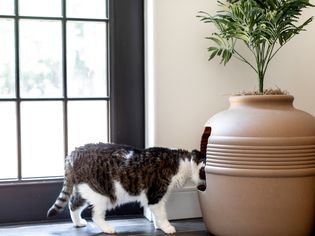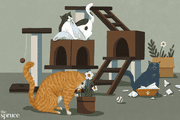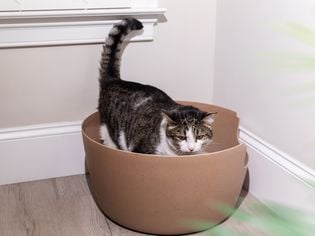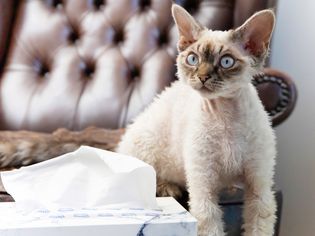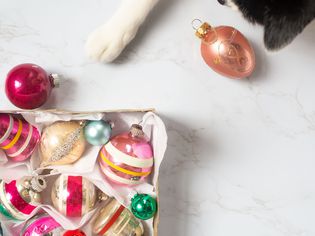When your cat’s sparkly, expressive eyes are suddenly goopy with eye boogers, you may be caught off guard. How did that happen so quickly? What’s causing it and how do you stop it? The good news is that there are many effective ways to provide your cat relief and get their eyes looking enchanting in no time. The first step is to figure out what’s wrong with your cat’s eyes.
Read on to learn all about the common eye conditions in cats that cause eye discharge.
What Are Cat Eye Boogers?
Eye boogers include any kind of discharge excreted by the eye. This can include tears, crusty debris found at the corners of the eyes, mucus-like green or yellow discharge, pus, or even blood. The eyes are constantly creating a tear film that covers the surface of the eye to protect it.
Under healthy conditions, this tear film combines with regular blinking to act like windshield wipers on a car to clear any dust and debris from the surface of the eye. When there is a problem with the eye, this system ramps up, producing additional tears and/or mucus to try to protect the eye along with additional secretions that may be part of an immune response.
Depending on the underlying cause of the problem, different types of eye boogers will be present. While some of these secretions serve a protective function, others are a clear sign of dysfunction. It is always important to see a vet when there is a sudden increase in eye discharge and/or other signs of abnormalities with the eyes. The eyes are very delicate and small problems can quickly become more serious, leading to complications and/or long-term damage to the eyes.
Common Causes of Cat Eye Boogers
There are many possible reasons for a cat to have eye discharge and it is usually not possible to determine the cause based on the appearance of the discharge alone. Your vet will use specialized equipment and tests to determine the cause of your cat’s eye discharge. Some of the most common causes include:
- Infections: Eye infections leading to conjunctivitis are the most common cause of eye discharge in cats. This is especially common in young kittens and cats with compromised immune systems. The most common infection in cat eyes is a virus called herpesvirus (FHV-1) and they can also get infections from calicivirus and some strains of bacteria. When cats have an eye infection, it is painful, and they will often squint or completely shut their eyes. Their eyes may look red and/or swollen in addition to having lots of tears and/or mucus or pus-like discharge. Usually, both eyes will be affected by an eye infection.
- Allergies: Cats that have allergies may develop eye discharge and sometimes may also develop conjunctivitis . You may notice a more seasonal pattern to your cat's eye problems if they have allergies to plants or pollen. Other cats may have allergies to dust or other irritants in the home and their signs may persist year-round. They often have excessive tearing and may have mucus-like discharge as well. Their eyes may be itchy, swollen, or have hair loss around the eyelids and surrounding skin. Usually, both eyes will be affected by allergies.
- Foreign bodies: Any foreign objects that get into the eye cause lots of irritation and pain. This can be anything from plant material to dust or even pieces of their own nails. In response to this irritation, the eye will create lots of tears to try to flush out the foreign material and may also secrete additional mucus. This is a painful condition and most cats will hold their eye shut tight if there is a foreign body stuck in their eye. They may also vocalize or rub at their eye repeatedly due to the pain. Usually only one eye is affected by a foreign body at a time.
- Anatomical problems: Some cats may be born with conditions that interfere with normal function of their eyes and this can also lead to problems including eye discharge. Some examples of this are conditions where the eyelids are rolled inwards, known as entropion, which can cause the eyelashes to rub on the surface of the eye and cause irritation. Other examples include eyelid agenesis where the eyelids are not fully formed, preventing the eyelids from closing all the way and interfering with normal blinking. These are chronic conditions, meaning that they will be a long-term problem for kittens that do not get better on their own. Many will require surgery to correct them.
- Breed-specific issues: Purebred cats with unique facial and/or eye conformation may also be more at risk for certain eye conditions that can lead to excess discharge. For example, cats with flatter faces like Persians and Scottish folds may have abnormal or blocked tear ducts which can cause tears to overflow out of the eyes, creating excessive tear-staining on their faces. These breeds along with others that seem to have bulging eyes are also more at risk for eye injuries since more of their eyeball is exposed. This can lead to irritation and injuries to the surface of the eye which can cause excessive tearing as well as mucus and/or pus-like discharge if the eyes become inflamed and/or infected as a result.
Normal vs Abnormal Cat Eye Boogers
Most eye discharge is abnormal. A cat with healthy eyes should have bright, clear eyes without continuous discharge. Cats will get the occasional eye crust at the inner corner of their eye and this is part of the eye’s self-maintenance program to flush out any irritants and remove them from the eye. However, if you notice that your cat has discharge at the corner of their eyes at all times of of the day, this is excessive and is a sign that something is wrong.
Additionally, if instead of small dried crusts you are noticing large amounts of green or yellowish mucus-like discharge, or discharge that looks white like pus, or contains blood, these are all signs of a medical problem. When there is an eye problem, the discharge will usually be accompanied by additional signs including redness, swelling, squinting, and/or closing the eye completely.
When to See a Vet
All eye problems warrant a trip to the vet as soon as possible. This is because a cat's eyes are very delicate and also very important. A minor problem with the eye can quickly escalate to a major problem. If left untreated, eye problems can lead to permanent vision loss and/or other serious complications. Additionally, the eyes are very sensitive and many eye conditions are very painful for cats. It is important to seek veterinary attention promptly to help them get relief and start healing as soon as possible.
Home Remedies and Treatments
Medical problems with the eye cannot be effectively treated or cured with home remedies, but there are things you can do at home to support your cat’s healing process once they have seen a vet and are on effective medications for their eye condition. These include:
- Clean the eyes: You can gently clean around the eyes with a moistened washcloth or paper towel to remove excessive discharge or crusts. Be sure to go very slow and be gentle. If your cat is squeezing their eyes shut, don’t pry them open but instead try to loosen any caked-on debris surrounding the eyes
- Flush with an eye wash: If your cat will tolerate it, you can use a product like artificial tears to gently flush out any discharge that may be stuck in the corners of the eyes. Be sure to check with your vet first, as this may interfere with topical medications you are already using in the eye. Also, never touch the surface of the eye with the tip of the eye wash as this can cause injuries.
- Protect your cat's eyes eyes: If your cat has an eye injury or painful condition that is causing them to rub at their eyes, you’ll want to use an Ecollar or cone to prevent them from doing any further damage to their eyes. Be sure to use the cone whenever your cat is unsupervised.
- Comfort your cat: Many eye conditions are painful and the process of taking medication can be stressful for lots of cats. Do your best to reduce stress and provide extra comfort to your cat. This could include using your cat’s favorite foods or treats to reward them for taking their medication, providing extra play and cuddle sessions, and/or using products like pheromone diffusers to reduce stress.
Preventative Measures
Not all eye problems can be prevented but there are some proactive steps you can take to promote your cat’s eye health, including:
- Keep your cat’s face clean: If you have a long-haired cat, be sure to keep up with regular brushing and grooming to avoid matted fur around their eyes and face.
- Set up regular check-ups: Keep up with routine preventative care like annual exams, vaccines, deworming, and dental care. All of these measures help to prevent systemic health problems that can affect the eyes too. Routine vaccinations include vaccines against Herpesvirus and Calicivirus, both of which cause eye infections. It also gives your vet a chance to examine your cat’s eyes regularly and catch any problems as soon as possible.
- Be vigilant: If you do notice anything abnormal with your cat’s eyes, be sure to seek veterinary care right away. Even if it seems minor, the sooner you address it, the better chance you have of avoiding complications.
Conclusion
A cat’s eyes are so expressive that it can be very worrisome to notice a problem like eye discharge. There are many possible causes for eye discharge in cats ranging from eye infections to allergies to congenital abnormalities or foreign material that irritates the eye. The only way to get to the bottom of what’s going on is to see a vet who can diagnose the problem and start effective treatment right away.
Early treatment is critical to avoiding long-term complications like vision problems. The good news is that most eye problems can be effectively cured and your cat will get the relief they need. Before you know it, you’ll be staring into those sparkling, mysterious cat eyes once again.


